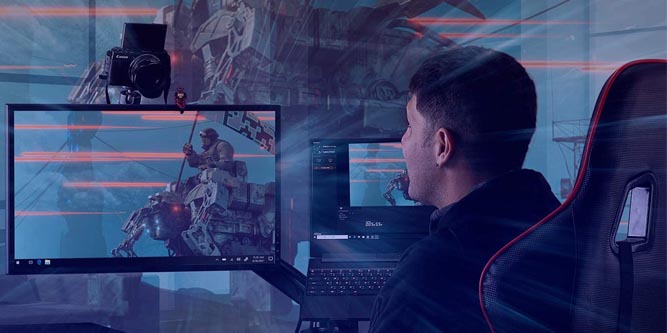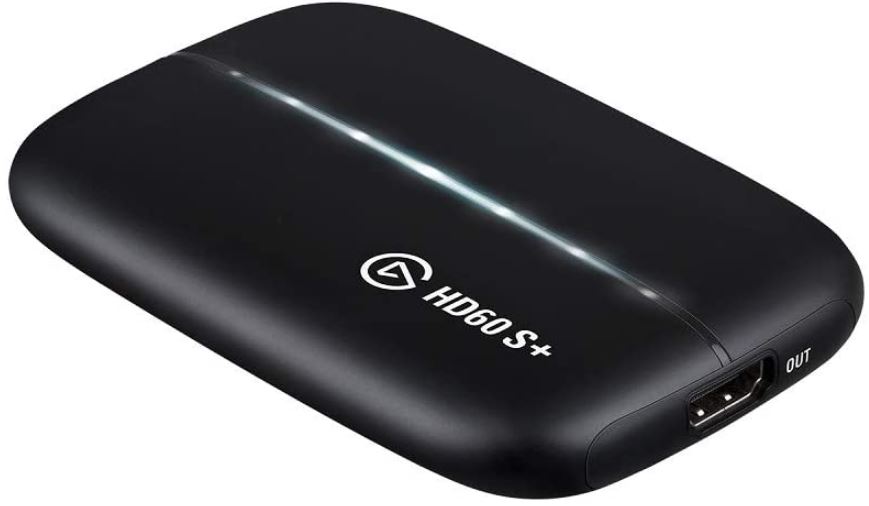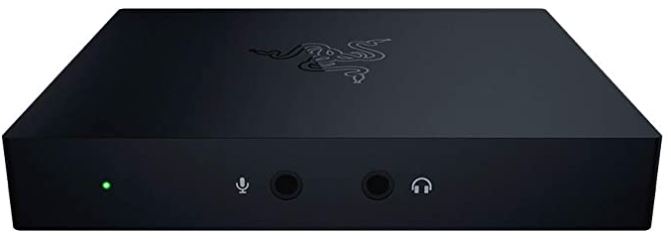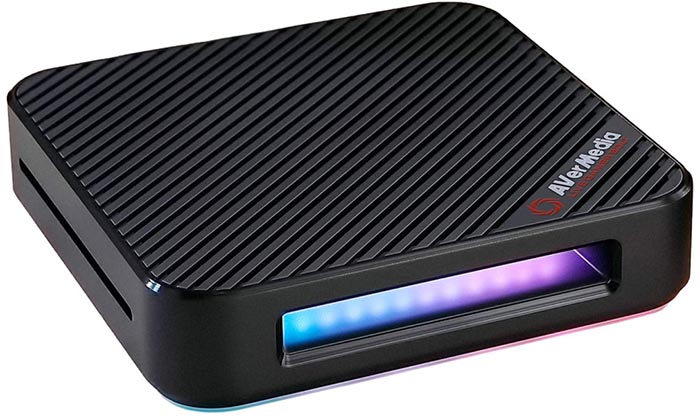These days, streaming services are some of the most popular platforms around. You can gain a large following just by playing video games, providing interesting commentary, and streaming it. But console gamers face a unique challenge. How do you take your PlayStation 5 or Xbox game, and stream it on a PC-based console? What if you want to record the footage and edit or upload it later? In those cases, native console apps aren’t going to get you very far. Those are designed for casual gamers to share clips with their friends. If you’re a serious streamer, you need to be on a real platform.
Modern consoles pose an additional challenge for streamers. In the last console generation, you had 1080p video, and at a maximum framerate of 60 frames per second (FPS). Today’s consoles can play 4K video, or play at lower resolutions at 120 FPS. This means that your old capture card is liable to be obsolete. At worst, it won’t function with 4K video. At best, everything will be downscaled to 1080p.
We’re about to review three of the best 4K & 1080p capture cards available for the PS5. We’ll begin by looking at the Elgato HD60 S+. This is a compact card with wide compatibility, equally well-suited for PC, Xbox, and Nintendo Switch. Next, we’ll be reviewing the Razer Ripsaw. This multiplayer-oriented beast includes live pass-through and seamless mixing for in-game chat. Finally, we’ll examine the AVerMedia Live Gamer Bolt. This powerful card is capable of 4K 60 FPS recording, or 1080p 240 FPS recording. But which one is the best choice for your PlayStation 5? Let’s dig a little deeper, and see what we learn.
What to Look for in a Video Capture Card
So, what separates a good video capture card from one that you should avoid? There are three main things you should look at: compatibility, portability, and video quality. After that, you can ask yourself other questions, and think about aesthetics. But first, you need to consider these three factors.
Compatibility
Before you do anything else, you need make absolutely sure a capture card is compatible with your device. Otherwise, you won’t be able to stream! We’ve done the work for you today, and chosen three PS5-compatible cards. In fact, most HDMI capture cards will work with the PS5, but not all will get you the best quality. The biggest potential issue is if you’re streaming to a Mac, or using one for editing. In that case, you’ll need to make double sure that your capture card is compatible.
Portability
Not all 4K capture cards are portable. In fact, many of them are designed to install in your PC’s 5.25-inch drive bay. That said, you might want to be able to transfer your capture card from place to place. For instance, what if you stream PS5 games in your living room, and PC games in your bedroom? In that case, instead of using two different capture cards, you can just use a single card.
When looking for portability, you’ll also want to consider cord design. Built-in cords are common, and they’re impossible to lose. However, if they get damaged, you have to replace the whole card. All of our choices have separate cords, which can be replaced as needed. That said, they can also be lost if you’re not careful.
Video Quality
Capture card video quality is measured in two different ways. The first is the capture quality, or the quality at which the video is captured. The second is the pass-through quality, or the quality of the video you see on your screen as you’re playing. Depending on the design, these two measurements are usually – but not always – different. Most cards these days capture in 1080p, which is the normal HD standard for streaming. That said, as 4K streaming starts to become more popular, we’re seeing more and more full 4K capture cards.
What pass-through quality will need will depend on your physical display. Generally, though, capture quality will be equal or less to the pass-through quality. Let’s say you’re playing on a 4K TV. There are plenty of capture cards that will record in 1080p and provide a full 4K signal to your TV. There are fewer that will both record and play in 4K. We haven’t yet seen any that will record in 4K, but won’t pass video through in 4K.
Elgato HD60 S+
Elgato is a well-known manufacturer of gaming-related accessories. We’ve already reviewed the Elgato Cam Link, a compact HDMI capture card the size of a flash drive. The Elgato HD60 S+ is a full-sized, full-featured card that measures 4.41 inches long, 2.95 wide, and 0.75 thick. It’s constructed from matte black plastic, with a tapered, rounded profile that leaves no hard edges. This profile makes it easy to slip into a pocket without jabbing yourself.
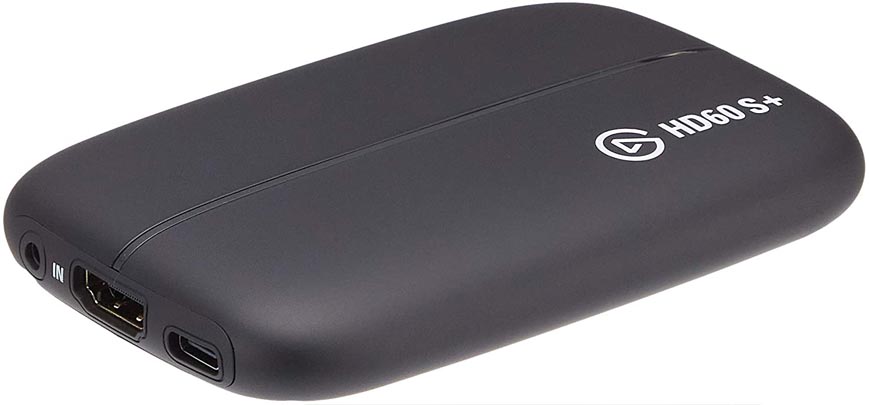
A LED stripe runs down the top of the housing, letting you know when it’s fully-powered. The USB type-C power input can be found on one side, along with the HDMI input. The HDMI output port is located on the opposite end. This makes it easy to wire up, and easy to pack up when you’re done gaming.
Along with recording your game, the HD60 S+ is designed for easy replay. It includes a low-latency replay function called Instant Gameview, so you can review your footage on the fly. This feature won’t be terribly useful for live streams. However, it’s incredibly helpful if you’re recording a let’s play, or any other kind of pre-recorded content. This same feature also allows you to retroactively record footage you missed.
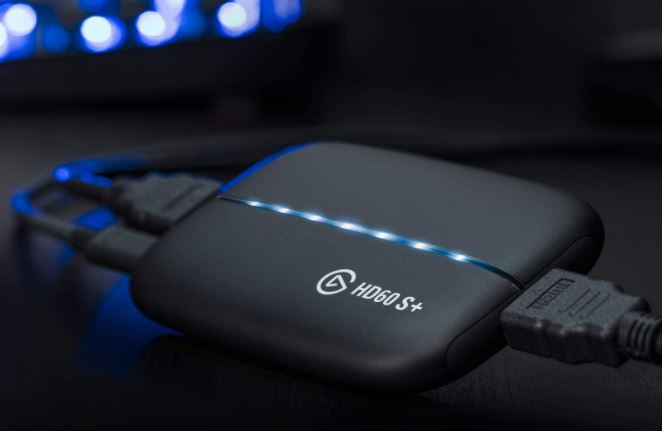
Capture Capabilities
The HD60 S+ records your video in 1080p full HD, at 60 FPS. On the one hand, this isn’t as high-resolution – or as high a framerate – as the PS5 is capable of. On the other hand, most major streaming platforms don’t support 4K. YouTube supports a maximum of 1080p at 60 FPS, which is exactly what you’re getting. Twitch technically supports 4K, but it considers sustained streaming at over 3,500K to be “abuse.” 4K streaming can use as much as 9,000K. In other words, if you actually stream in 4K, you’ll probably get banned. 4K recordings are only really useful as pre-recorded content on select platforms. For everything else, 1080p at 60 FPS is still the gold standard.
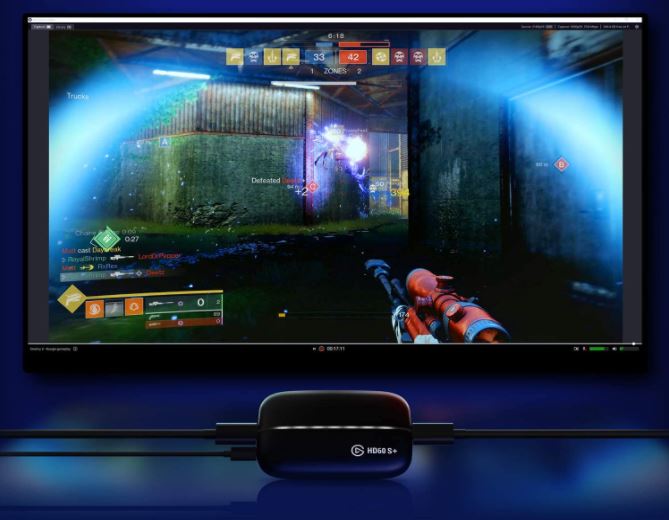
That said, the pass-through video quality is less than we would have hoped. It will output video in 4K at 60 FPS. Now, the 4K video quality is solid, and we have no complaints about the color balance or anything like that. But the 60 FPS frame limit can be problematic for some users. The PS5 – along with the Xbox Series X/S – is capable of 4K gaming at a full 120 FPS. If you’re rocking a brand new 120 FPS display, you won’t get to take advantage while using this capture card. Instead, you’ll be limited to a mere 60 FPS. On the other hand, if you use a 60 FPS display, you won’t notice any difference whatsoever.
Razer Ripsaw
Razer is best-known for their gaming PC accessories, such as their Nommo Chroma computer speakers. However, the Razer Ripsaw 4K capture card is just as useful for PS5 streamers as for use with a PC. This is a durable plastic capture card, which measures 4.14 inches wide, 3.35 inches deep, and 0.63 inches thick. It’s mostly matte black, with a glossy Razer finish smack in the top. It’s also squared off on all the corners. This lends it a blocky appearance, and it’s better for stationary use than for frequent transport. That said, it’s still small enough that throwing it in a backpack is no big deal.
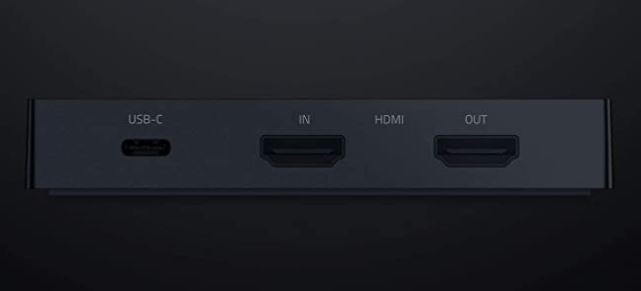
The back of the unit houses all of the necessary ports. There’s a USB Type-C port to provide power, along with HDMI input and output ports. On the front of the housing, you’ll find two additional ports. These are both 3.5mm aux jacks, one for a mic and one for headphones. These are useful for multiplayer streaming, and we’ll discuss them more in a second. Alongside, there’s a single green LED to let you know the card is fully powered. That’s all there is to it.
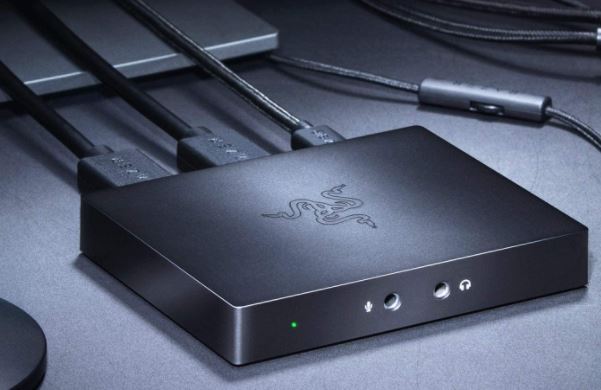
Capture Capabilities
Like the HD60 S+, the Ripsaw records in 1080p at 60 FPS. This is sufficient for streaming just about anywhere, with a bare handful of exceptions. Color clarity is good, and there’s no flicker or other artifacts cluttering up your recording. In addition, you can change the settings to record in several other resolutions. These include 720p and 480p at 60 FPS, or 2160p, 1440p, and 1080p at 30 FPS. This gives you a little more flexibility than most comparable capture cards. The pass-through quality is 4K at 60 FPS, the same as the HD60 S+.
Perhaps the most useful feature of the Ripsaw is its ability to receive and seamlessly mix multiple audio sources. With many capture cards, recording team chats is challenging, because you need to record a separate track. Then, you need to mix the audio back in later. The Ripsaw lets you record team chats on the fly, so you won’t have to mess with the audio after the fact. You can also include a live voiceover for a let’s play without configuring a second audio source.
AVerMedia Live Gamer Bolt
AVerMedia specializes in streaming equipment, such as the AVerMedia GC573 4K capture card. But while the GC573 is an internal card for PCs, the AVerMedia Live Gamer Bolt is for any system. It’s a beefy external box, measuring 4.72 inches square and 1.15 inches in thickness. The housing is black plastic, constructed around a large rectangular air gap in the center. This gap is lit with rainbow LEDs, adding a bit of flair to a device that would otherwise be pretty plain. The back of the housing includes a Thunderbolt 3 port, as well as HDMI input and output ports.
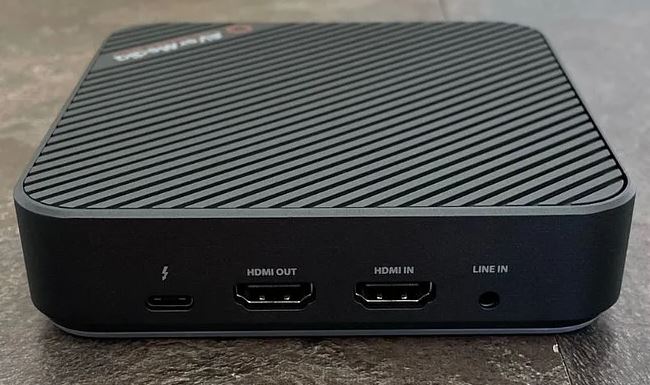
Capture Capabilities
The Live Gamer Bolt captures video in full 4K at 60 FPS. This exceeds what you can stream on pretty much any platform. You can also record at up to 240 FPS in 1080p, reducing motion blur in games with a ton of action. Pass-through video quality is also excellent. In addition to 60 FPS, the card supports pass-through video at 144 and 240 FPS for the newest 4K TVs.
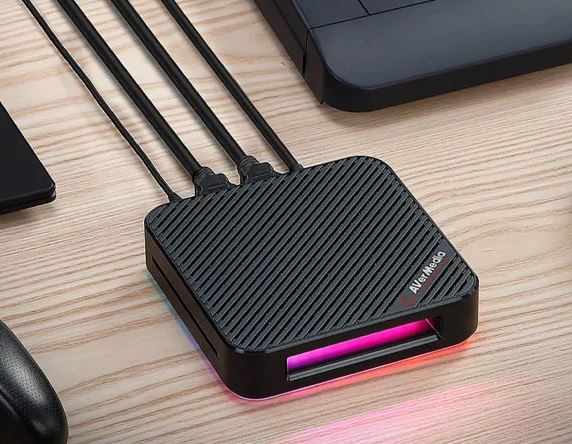
There’s one thing you need to keep in mind, though. This capture card requires Thunderbolt 3 power, and ordinary USB Type-C won’t work. If you’re not recording on a Mac, you’ll need to buy a Thunderbolt card or Thunderbolt AC adapter.
Final Verdict
So, which one of these PS5 capture cards is the best choice for your rig? In terms of capability, the Elgato HD60 S+ offers very little that the others don’t. Other than the ability to retroactively record footage, it’s fairly mundane. You can stream or record in 1080p at 60 FPS, with a pass-through resolution of 4K at 60 FPS. Then again, this is a very small device, and can even be carried in your pocket. It’s a great choice if you frequently stream from different locations.
The Razer Ripsaw is a little bit different. It has a larger profile, but it also supports more formats. Most people will probably still prefer to record in 1080p at 60 FPS, but it’s always good to have options. The more useful feature is the ability to record live audio, both in-game chat and live commentary. This cuts down the editing work you’ll need to do later.
The AVerMedia Live Gamer Bolt offers the highest recording resolution. Capturing video in 4K at 60 FPS, it exceeds any of today’s other offerings. Of course, you’ll pay a premium for this performance, and it’s not necessary on most platforms. Then again, recording in the highest-possible quality will ensure that your videos look fresh in several years. In addition to that, the Live Gamer Bolt also has a pass-through framerate of up to 240 FPS. This makes it suitable for use with modern TVs with very high framerates.
Meet Ry, “TechGuru,” a 36-year-old technology enthusiast with a deep passion for tech innovations. With extensive experience, he specializes in gaming hardware and software, and has expertise in gadgets, custom PCs, and audio.
Besides writing about tech and reviewing new products, he enjoys traveling, hiking, and photography. Committed to keeping up with the latest industry trends, he aims to guide readers in making informed tech decisions.

